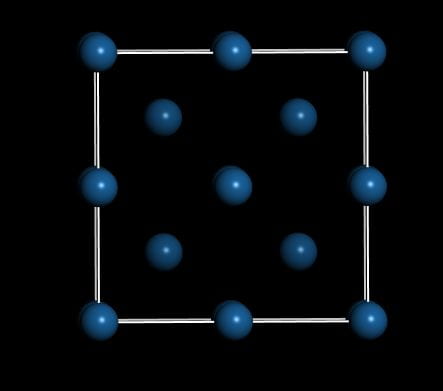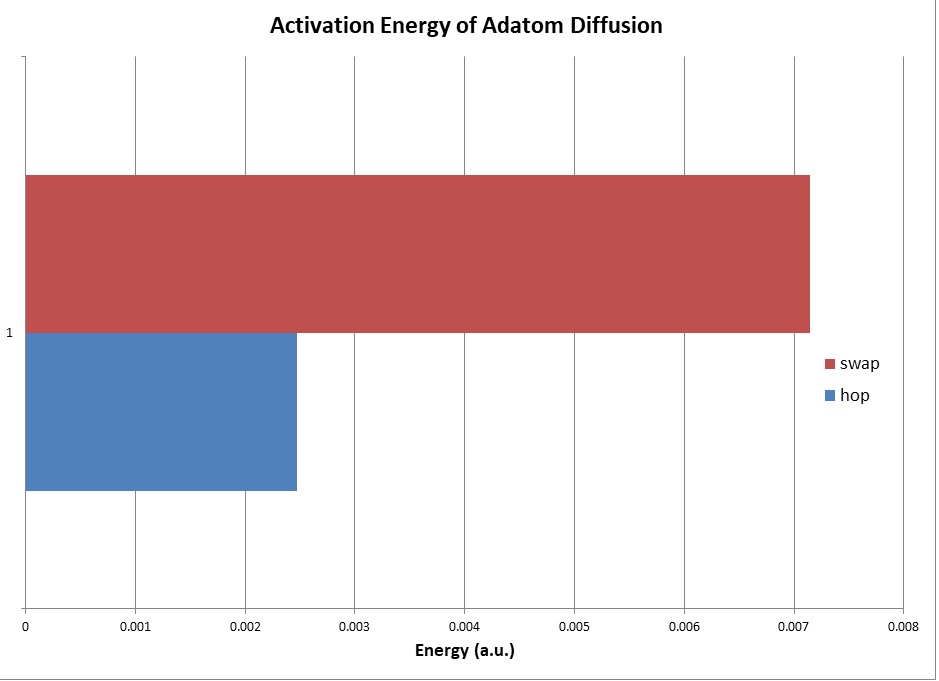By Charles Bigelow
Abstract
Platinum’s optimal lattice parameters were analytically derived using Density-Functional Theory (DFT) methods. The Cambridge Serial Total Energy Package (CASTEP) software package, which uses planewave basis sets in order to analyze crystal structures, was implemented to analyze the SC, HCP, and FCC lattices of platinum to determine the optimal parameters. Platinum’s optimal structure was calculated to be the FCC Lattice at a volume of 63.619 cubic Angstroms. Simple Cubic was found to be the least optimal structure of the three lattices constructed and optimized.
Introduction
As with all metals, platinum has a preferred lattice structure under Standard Temperature and Pressure (STP); however one must determine which structure is preferred over other possible structures. Instead of more traditional experimental methods to determine Platinum’s lattice constants, Density-Functional-Theory can be utilized in order to determine the optimal parameters. This enables chemists to perform analysese normally not readily accessible to the experimentalist due to the flexibility of the calculations. Using this flexibility, one can analyze several types of crystal structures which would normally not be present under normal circumstances, allowing predictions and further in-depth probing of lattice systems. This opens up the possibility to predict structures of substances with unknown crystal structures, or to predict if a certain crystal is not at an energetically favorable composition.
Methods
All calculations were run with the MaterialsStudio software package, using the CASTEP package to analyze FCC, HCP, and SC crystal structures. The On-The-Fly-Generation (OTFG) ultrasoft pseudo-potential was used in the calculations, in which allows the lowest cutoff energy for the given basis set to reduce computational cost. The platinum configuration used in this pseudo-potential was with a Bohr radii of 1.5, an electron configuration of 4f14 5s2 5p6 5d9 6s1 with 32 electrons, and 20 different energy bands.
A k-point set was chosen using a 3x3x2 grid for SC and HCP (18 k-points), while a 4x4x3 grid was used for FCC (60 k-points), both of which achieved reasonable convergence onto the calculations while minimizing cost.
The energy cutoff was optimized at 320eV. This parameter affects the smearing of the wave-function to minimize fluctuations in energy calculations, however also increasing computational cost; 320eV was found to have the lowest reasonable convergence and efficiency.
The calculations implemented the generalized gradient approximation (GGA) using the Perdew–Burke–Ernzerhof functional.
The analysis of the Hexagonal Close-Packed (HCP) crystal structure consisted of determining both the optimal crystal volume as well as the optimal “c” to “a” vector ratio. For the volume, the optimization was done using a 1.6:1 a to c ratio, and four separate volume’s; 44, 40, 34, and 28 cubic Angstroms (A^3). Of these, 40, 34, and 28 were used to determine the polynomial equation for the energy with respect to volume.
The minimum of the polynomial was determined by setting its derivative to zero and evaluating for x; the optimum lattice volume was determined as 32.284 cubic Angstroms.
Further observation was done with varying the c/a ratio along with volume to observe the general trend of the preferred configuration; it was discovered that at smaller volumes, a 1.6:1 ratio is preferred, while at the optimal volume and above, the lower ratios were dominant.
The c/a ratio was then analyzed using the optimized volume of 32.284 cubic Angstroms.
It was discovered that at this lattice volume, the preferred ratio was determined by the derivative of the polynomial evaluated to zero. It was found to be 1.34368:1 and the corresponding energy was determined to be -26101.61 eV.
A Simple Cubic (SC) Lattice was generated from Platinum to observe its preferred lattice volume; this was done in a similar manner as HCP.
The optimal volume was determined to be 19.7596 cubic Angstroms by evaluating its polynomial at zero. The energy corresponding to this volume was -13049.77 eV.
A Face-Centered Cubic (FCC) crystal lattice of platinum was analyzed to determine its optimum volume in the same manner as the HCP and the SC systems, as well as evaluation of its polynomial at zero. the three points closest to the lowest value were used to generate the polynomial.
The optimal volume was determined to be 63.61879 cubic Angstroms. At this volume, the FCC structure of Platinum has an energy of -52203.63 eV.
Comparison of the three different configurations indicates that the FCC lattice structure is optimal for platinum, while also giving the largest optimized volume of the three analyzed. It has markedly higher stability than does the SC or the HCP configurations.
With the data provided, it is hypothesized that if pressure were to increase, HCP and SC would become the more stable configurations to the crystal structure of platinum.























